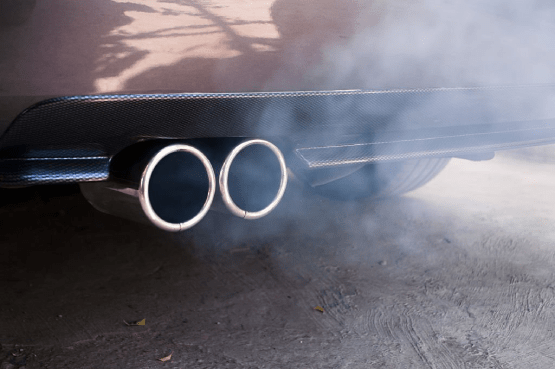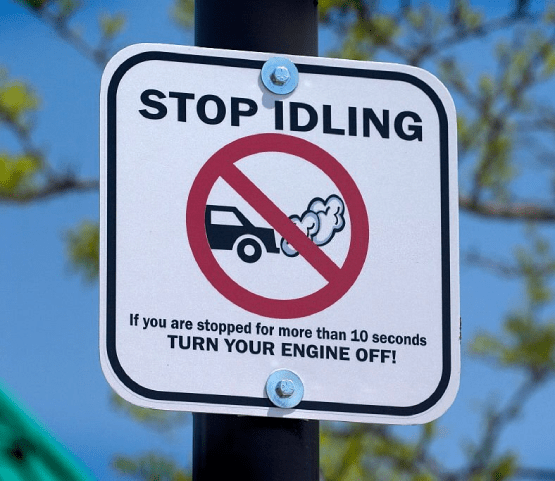Imagine you’re stuck in your car on a highway; all the vehicles around you also appear to have halted, probably due to the upfront stoplight or an accident. These cars, with their engines still running within those few minutes, are being idled. Many of us experience this as far as car owners or motorists go. It makes us uncomfortable.
- Does idling use gas?
- Is Idling bad for my car engine?
- What is the normal idle RPM for a car?
- How much CO2 does an idling car emit per minute?
- Does idling drain your battery?
- How long can I idle my car?
- Is it better to idle or to turn your car off?
- What happens when you idle your car for too long?
- Conclusion
To idle a car is to leave the engine running while the vehicle is not in motion. So basically, turning the ignition key and moving zero miles. Car idling most times occurs during traffic jams, although leaving your engine running in your garage or warming up during winter is also idling.
At the end of this article, you will have answers to the most critical questions about what idling does to the car.
Does idling use gas?
The simple answer to this question is yes! The moment your car is on, it starts burning gas regardless if the vehicle is in motion or not. Idling a car for more than an hour could cause the engine to suck up over half a gallon of gasoline. However, this depends on the type and size of the engine.

Idling a car for two minutes could also be equivalent to driving a mile in terms of gas usage—the bigger the engine, the more gas used during idling.
However, if your vehicle is a hybrid-powered one, whenever a traditional engine would be idling, your car will run on battery, thus saving gas.
Is Idling bad for my car engine?
Your car engine is the heart of the vehicle. It’s where the magic happens. As you slide the car key into the slot and rotate, you close the ignition circuit. The circuit then provides electrical power to the starter motor for operating the piston in the cylinder with the help of the spark plug.
The fuel-air mixture is introduced into the cylinder following the intake process and ignited, causing combustion. This means that when your car starts running, it burns gasoline, not just gasoline; it also burns motor oil.
Idling your car isn’t necessarily bad for the engines. However, idling a car for too long, many times a week, in the long run, could cause one to do a brief maintenance check at the mechanic.
Leaving your engine running for a few minutes while you get coffee from the coffee shop or waiting for a school pickup would likely cause no damage to your car engine. Still, in traffic jams, car idling could cause trouble and adversely affect the engine’s useful life.
A car runs zero miles during idling, and a small amount of gas is needed for internal combustion for the vehicle to remain powered on. Since combustion is incomplete, there is a build-up of carbon soot in the engine. These accumulated residues can damage the exhaust systems.
The cylinder and spark plugs could also be damaged as idling ultimately causes wear and tear to car engines.
Most people wrongly believe leaving your car on for a few minutes is safer than starting and restarting when in traffic or during a quick stop. This is a common myth, and it’s inaccurate. Leaving your car on for 10 seconds consumes more gasoline than starting and restarting.
What is the normal idle RPM for a car?
In most cars, the idle speed is between 600-1000 rpm on average. You could experience fluctuations in these figures if the AC is turned on and off or the car engine is experiencing a drag. The idle speed also depends on the model and type of your car, but it is usually within this range.
Idling over 1000 rpm could very well be indicating an unknown mechanical issue. On the other hand, below 600 rpm most times mean the car would need a tune-up.
How much CO2 does an idling car emit per minute?
Cars in optimal conditions, when in motion, generally have a higher amount of oxygen available for combustion; hence, during movement, internal combustion is complete, and CO2 is released in the exhaust pipe.
However, an idle car undergoes incomplete combustion, and the engines could burn up to half a gallon of gas and release small amounts of CO, about four pounds of CO2, into the air.
Every minute your car spends idling produces about 10g of carbon dioxide on average. This number is also determined by the fuel type (diesel or gasoline) and vehicle type.
Conversely, a car idling in an enclosed space such as a garage would not have enough oxygen needed for complete combustion. Thus, more CO is released, which could be fatal in an enclosed space with no ventilation.
Does idling drain your battery?
Contrary to what we believe, a car battery cannot charge itself. It requires an electrical support system to regain lost charges. This system is in place in every vehicle. Remove this system, and the battery would run flat in concise periods. The battery provides that shock of electricity needed to power the car, so basically, without the battery, the car won’t start.
Idling a car drains the battery inevitably. However, just like the cell phone, a charging system must also counteract the car battery. The alternator serves this purpose. It is tasked with converting some of the engine’s power to electrical energy suitable for recharging the battery. This helps sustain battery charge. This effect runs as long as the engine is on.
Now, if the alternator is faulty, then the battery drains and eventually runs dead. Another scenario is when the AC and the radio are also in use; in this case, the battery drains faster than it can be recharged and ultimately loses its battery power.
How long can I idle my car?
As a general rule of thumb, it is better to switch off the engine whenever you expect the car to idle for more than a couple of minutes.
Leaving your engine running from a few seconds to a few minutes isn’t considered to incur any lasting negative effects, but sometimes we can’t help it. For instance, we leave the car running during winter to warm up the engine.
Also, when at a stoplight, turning off the ignition key and back on would take a longer time than just leaving the engine running as you wait for the green light.
However, we should restrain from making idling a habit even when we find ourselves in bumper-to-bumper traffic; starting and restarting the engine is generally better. Most new cars come with stop-start technology, which shuts off the engine when the vehicle is not moving.
Is it better to idle or to turn your car off?
If you expect the car to idle for more than two minutes, it is always better to turn your vehicle off. Turning the ignition key multiple times might seem a bit of a chore, especially when on a congested highway or a backed-up city, which is better than leaving your engine running.

As mentioned, an idle car also uses up gas. The more gas, the more CO2 released, which is terrible for our environment as CO2 is a greenhouse gas that can cause global warming.
Idling a car several minutes a day, many times a week, without racking up any miles is like burning several dollars. Gas costs money! A drained battery would require a new one.
A damaged spark plug due to high idling increases maintenance costs, and in some cases, overheating can occur. Why not save yourself the extra costs and turn off the engine?
What happens when you idle your car for too long?
The longer you leave your engine running, the more gas it burns. It also burns up more motor oil. Over long periods, the gasket, motor plug, and cylinder ring deteriorate. The car battery’s useful life is also reduced as it is constantly drained and has less time to recharge.
Ultimately, the engine as a whole develops a fault. Consequently, a mechanical failure, the internal combustion process becomes flawed, and the car exhaust produces gasses and unhealthy fumes that contribute to polluting the air.
Aside from the cost of wasted gas or diesel and the frequent change in motor oil, which also costs money, another vital point to keep in mind is carbon monoxide poisoning. An idling car in an enclosed space would produce more carbon monoxide than CO2, its less poisonous relative. In a poorly ventilated area, this could be fatal.
Fuel shortage is also possible. You can run out of gas simply by sitting and waiting in your car, leaving you stranded. Idling decreases the overall car performance of a vehicle.
To sum up, warming your car engine for several minutes non-stop would not improve the vehicle’s overall performance. However, repeatedly idling your car over extended periods would likely cause unfavorable issues and unwanted expenses.
Conclusion
We all run into traffic often, and whether you own a car or not, traffic jams can be so annoying and physically draining, especially when you have a plane to catch or that boss that doesn’t condone lateness or a business meeting you don’t want to miss. The slow to no movement of cars in traffic cause idling and, for most vehicles, this means more gas or more maintenance checks.
Sources
Here’s Why You Should Never Idle a Modern Car for Extended Periods in The Winter
Idling Action Research – Review of Emissions Data
How Long Can You Leave Your Car Running?
Every since I was a little boy, I can remember spending the afternoons in my dad’s repair shop. I got my first car at 16 and it was the best feeling ever!
I have contributed to various automotive publications but decided it’s finally time to settle for something constant.








